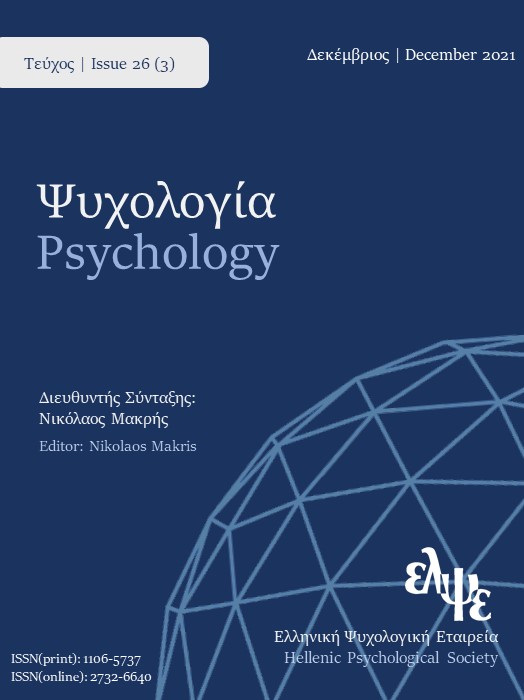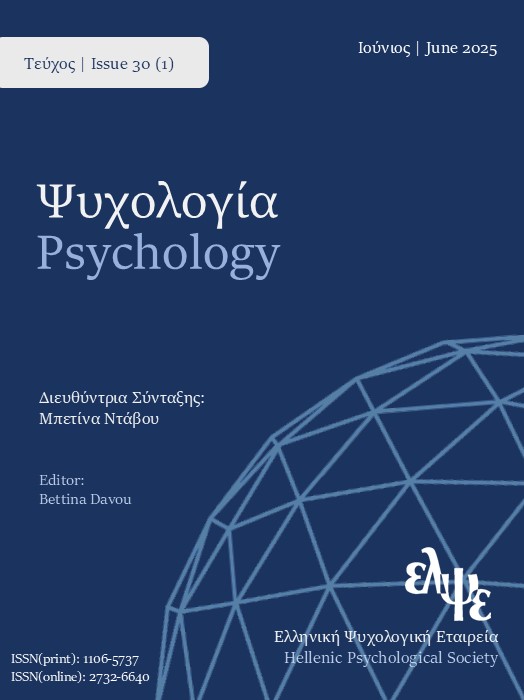Το δίλημμα μη αυτενέργειας vs. πρόκλησης στον λόγo των νέων περί θυματοποίησης

Περίληψη
Η ψυχολογική θεωρία και έρευνα στην σχολική βία και στον εκφοβισμό έχει συνδέσει
το προφίλ του θύματος με χαρακτηριστικά ευαλωτότητας και την έλλειψη όποιας
αντίδρασης, χωρίς συχνά να γίνεται λόγος για εναλλακτικές κατασκευές της
ταυτότητας του θύματος. Αυτή η γραμμή έρευνας προσεγγίζει τα θύματα ως άτομα
που ανήκουν σε ομάδες χαμηλού κύρους και συνεπώς που κατέχουν μία λιγότερο
κυρίαρχη θέση στην ομάδα συνομηλίκων. Ενώ η κοινωνιο-ψυχολογική έρευνα που
βασίζεται στη θεώρηση της κοινωνικής ταυτότητας υποστηρίζει πως οι νέοι που
θυματοποιούνται μπορεί να επενδύουν σε μία κοινή ταυτότητα, το παρόν άρθρο
συζητά πώς οι νέοι στις καθημερινές αλληλεπιδράσεις τους μπορεί να
απομακρύνονται από τη θέση του αδύναμου θύματος. Σκοπός της παρούσας μελέτης
είναι να αναλύσει τον τρόπο με τον οποίο κατασκευάζεται η ταυτότητα του θύματος
στον λόγο των νέων για τον εκφοβισμό και την βία. Για την ανάλυση των δεδομένων,
χρησιμοποιούνται έννοιες/εργαλεία της λογο-ψυχολογίας και της ρητορικής
ψυχολογίας. Ενώ αναδείχτηκαν ορισμένα διλήμματα θυματοποίησης, βασικό μέλημα
των συμμετεχόντων/ουσών ήταν να μην τοποθετηθούν οι ίδιοι/-ες ως θύματα. Η
ταυτότητα του θύματος συχνά συνδεόταν με την απουσία αυτενέργειας και με την
ήπια προκλητικότητα. Oι θύτες συχνά αξιολογούνταν ως παράλογα επιθετικά άτομα,
ωστόσο σε άλλες περιπτώσεις οι συμμετέχοντες/-ουσες τόνιζαν την προκλητικότητα
του θύματος ή την υπερβολική του παθητικότητα.
Λεπτομέρειες άρθρου
- Πώς να δημιουργήσετε Αναφορές
-
Καραγιάννη Κ., & Σαπουντζής Α. (2023). Το δίλημμα μη αυτενέργειας vs. πρόκλησης στον λόγo των νέων περί θυματοποίησης . Ψυχολογία: το περιοδικό της Ελληνικής Ψυχολογικής Εταιρείας, 28(1), 195–212. https://doi.org/10.12681/psy_hps.30552
- Ενότητα
- ΕΜΠΕΙΡΙΚΕΣ ΕΡΓΑΣΙΕΣ

Αυτή η εργασία είναι αδειοδοτημένη υπό το Creative Commons Attribution-ShareAlike 4.0 International License.
Το περιοδικό ΨΥΧΟΛΟΓΙΑ έχει υιοθετήσει μία πολιτική Platinum open-access. Τα έξοδα υποβολής, επεξεργασίας ή δημοσίευσης των εργασιών καλύπτονται από την Ελληνική Ψυχολογική Εταιρεία. Τα πνευματικά δικαιώματα των δημοσιευμένων εργασιών προστατεύονται από την άδεια 'Creative Commons Attribution-ShareAlike 4.0 International'. Οι Συγγραφείς διατηρούν τα Πνευματικά Δικαιώματα και χορηγούν στο περιοδικό το δικαίωμα της πρώτης δημοσίευσης. Η άδεια αυτή επιτρέπει σε τρίτους, να χρησιμοποιούν την εργασία σε οποιαδήποτε μορφή, με την προϋπόθεση της διατήρησης των διατυπώσεων που προβλέπονται στην άδεια σχετικά με την αναφορά στον αρχικό δημιουργό και την αρχική δημοσίευση στο περιοδικό ΨΥΧΟΛΟΓΙΑ. Επιπλέον, κάθε διανομή της εργασίας οφείλει να γίνεται με τους ίδιους όρους διανομής, δηλαδή με την ίδια άδεια Creative Commons.








